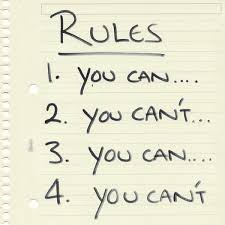blog
creativity
rules
Why Spontaneity Comes from Following the Rules
Over at Lateral Action, there is an interesting (& rather deep) post regarding a conversation between Brian Eno and the developer of Sim City, and the application of rules bringing about successful spontaneity. Read the full article here:
http://lateralaction.com/articles/brian-eno-will-wright/
The simplest, and most profound, summation of this conversation came in the final segment, quoted here:
How much do I love those final few sentences. Testing ideas, playing, and being open to failure. Knowing that we *don't know* the outcome, and letting it reveal itself through the process. This is what I mean when I talk about organic creativity! Rules are powerful! Rules are what gives structure to our attempts, what binds together disparate ideas and aesthetics into something solid, tangible, impactful. The results are something familiar to everyone on some level, yet truly unique to us. We use the rules as a tool to create something greater than we could have if we had not defined them and honored them to begin with. And of course, the other lesson in this article is to not impose too many rules. Find those which are truly important, truly valuable to the process and the outcome, and let the rest flow as it will. I aspire to be this confident and comfortable in my creative process, through the thoughtful, sparing, application of rules.
http://lateralaction.com/articles/brian-eno-will-wright/
The simplest, and most profound, summation of this conversation came in the final segment, quoted here:
Play It Simple
A point that comes up repeatedly in the Eno/Wright talk is that complex results emerge from simple rules. No rules mean there is no system, so nothing is generated. But if you add too many rules and risk breaking the system. The trick is to find just enough rules to get the system under way without destroying it prematurely.
Listening to the talk, I was reminded of playing improvisation games at The Spontaneity Shop: when actors try to improvise a scene in which ‘anything goes’, the results are flat and lifeless.
But introduce a simple rule such as ‘one of you is higher status and the other’, and it starts to come alive. Tweak the rules slightly – ‘one of you is the servant but acts higher status than the master’ – and you have a recipe for spontaneous comedy.
Twitter is another good example of a generative system. When I first tried Twitter, I didn’t see the point. There was so little I could do. Type a 140 character message? Get messages from other people? Is that all?
But when I was persuaded to persist with Twitter, I discovered the incredible richness of the conversations and connections it facilitates. Now you can find me there most days. It’s one of the very few web applications I would genuinely miss if it disappeared overnight.
I’m not the first one to be puzzled by Twitter’s lack of ‘obvious’ features that can be found in similar – but less successful – networks such as FriendFeed or Plurk. But Eno and Wright would probably argue that Twitter is so successful because its rules are so simple.
But how can you know in advance which rules will bring you the best creative results? Which ideas should you pursue and implement, and which should you leave on the drawing-board?
You can’t.
Which means you have to try things, play around with them, test quickly and test often. Allow failure to tag along as a daily playmate.
Isn’t that the beauty of real creativity, that you wake up every morning not knowing what you’re going to discover?
How much do I love those final few sentences. Testing ideas, playing, and being open to failure. Knowing that we *don't know* the outcome, and letting it reveal itself through the process. This is what I mean when I talk about organic creativity! Rules are powerful! Rules are what gives structure to our attempts, what binds together disparate ideas and aesthetics into something solid, tangible, impactful. The results are something familiar to everyone on some level, yet truly unique to us. We use the rules as a tool to create something greater than we could have if we had not defined them and honored them to begin with. And of course, the other lesson in this article is to not impose too many rules. Find those which are truly important, truly valuable to the process and the outcome, and let the rest flow as it will. I aspire to be this confident and comfortable in my creative process, through the thoughtful, sparing, application of rules.












If you put a bunch of school children in a play yard without a fence, they tend to stay in the middle. If you put a fence around it, they play all the way out to the edges. The "boundaries" (or rules) give us the freedom to whole yard to play and explore! Great post, Sharon.
ReplyDelete@opramum What a fantastic analogy! Thanks for sharing it!!
ReplyDelete